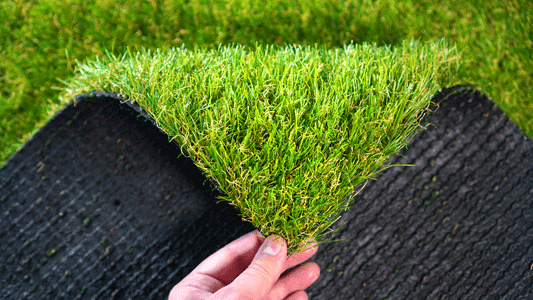The global adoption of artificial turf has revolutionized sports fields and landscaping, offering low-maintenance and durable alternatives to natural grass. However, the environmental implications of artificial turf at its end-of-life (EoL) stage present significant challenges. Currently, there is no established solution for the recycling and recovery of artificial turf in Finland, making it essential to explore sustainable management strategies. Recent research conducted at LUT University sheds light on effective methods to manage artificial turf waste sustainably.

© Photo: Adobe Stock
Understanding the End-of-Life Challenges
Artificial turf consists of multiple layers, including synthetic fibers, shock pads, and infill materials like crumb rubber and sand. Managing these components sustainably is complex due to their diverse material composition and environmental impacts. Current disposal methods, such as incineration and landfilling, have drawn criticism for their ecological repercussions. While incineration recovers energy, it releases greenhouse gases (GHGs). Landfilling, now restricted in many European regions, risks soil and groundwater contamination.
Recycling presents a promising alternative, yet the intricate structure of artificial turf makes it labor-intensive and costly. Additionally, technical and logistical hurdles limit its widespread adoption. This study delves into three scenarios to evaluate the environmental impacts of artificial turf management:
- Incineration with Energy Recovery (Finland)
- Recycling Abroad (Denmark)
- Local Recycling (Finland)
Key Findings: Why Local Recycling Stands Out
Using Life Cycle Assessment (LCA) methodology, the research reveals that local recycling in Finland outperforms other scenarios in minimizing environmental impacts. The findings underscore the importance of reusing crumb rubber – a major fossil-based component – instead of incinerating it. Recycling crumb rubber reduces GHG emissions significantly and contributes to circularity by substituting virgin materials.
- Global Warming Potential (GWP): Local recycling demonstrated the lowest GWP when crumb rubber was reused, compared to incineration and international recycling.
- Material Recovery: Recycling ensures that other components, such as sand and polyethylene, are repurposed, further enhancing environmental benefits.
- Avoiding Transportation Impacts: By avoiding long-distance shipping, local recycling minimizes emissions from logistics.
The Role of Crumb Rubber
Crumb rubber, derived from recycled tires, constitutes about 36% of artificial turf’s total weight. Managing this component is pivotal. Scenarios involving crumb rubber reuse, either in new artificial turf fields or as additional infill material, showed significantly lower environmental impacts compared to energy recovery through incineration. This highlights the need for advanced crumb rubber recycling technologies and infrastructure.
Broader Implications and Uncertainties
The research also emphasizes the necessity of transitioning to sustainable alternatives. Bio-based infill materials, such as cork or wood, could reduce reliance on fossil-based crumb rubber while mitigating microplastic pollution. However, this shift should be balanced with investments in recycling systems to manage existing artificial turf waste effectively.
One critical consideration is the safety of recycling artificial turf materials. Some artificial turf components may contain hazardous chemicals, and further research is needed to confirm the safety of their reuse. Ensuring that recycled materials do not introduce new environmental, or health risks is essential for developing a truly sustainable artificial turf management system.
Conclusion: Toward a Circular Economy for Artificial Turf
This study highlights the potential of local recycling as a sustainable solution for artificial turf end-of-life management. Policymakers and waste management operators in Finland and beyond should prioritize infrastructure development for recycling and crumb rubber reuse. By embracing innovative approaches and adopting sustainable materials, we can advance toward a circular economy for artificial turf, reducing its environmental footprint while maintaining its functional benefits.
About the Author
Amirsohrab Falsafi is a junior researcher at LUT University specializing in life cycle assessments and sustainable waste management. His work focuses on developing innovative solutions for managing plastic waste within a circular economy framework. His research is supervised by Prof. Mika Horttanainen, Head of the Department of Sustainability Science, Dr. Mariam Abdulkareem (Doctor of Science), and Dr. Mari Hupponen (Doctor of Science) at LUT University.